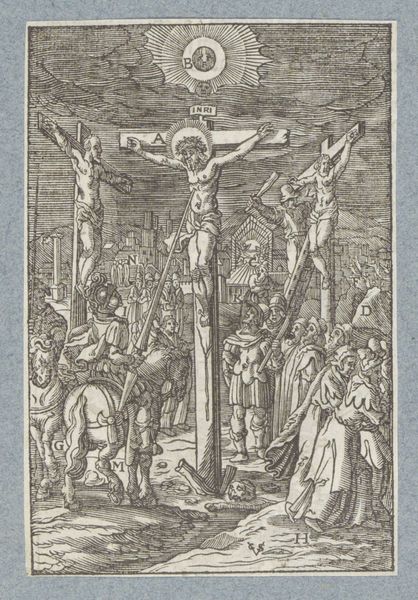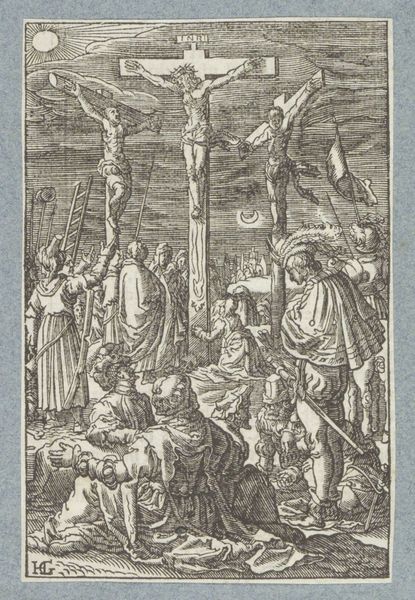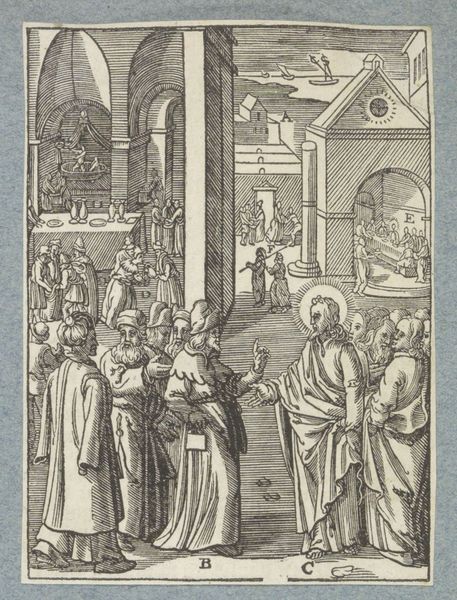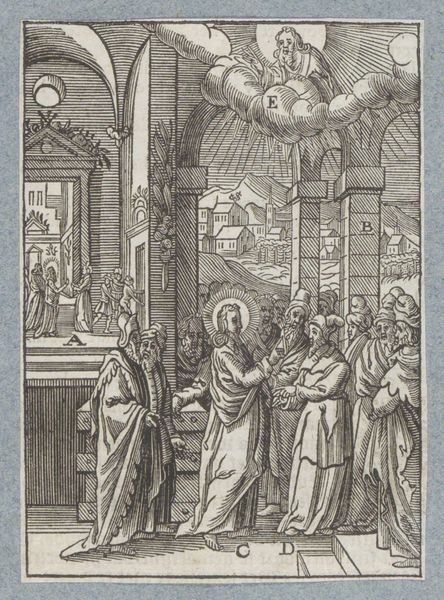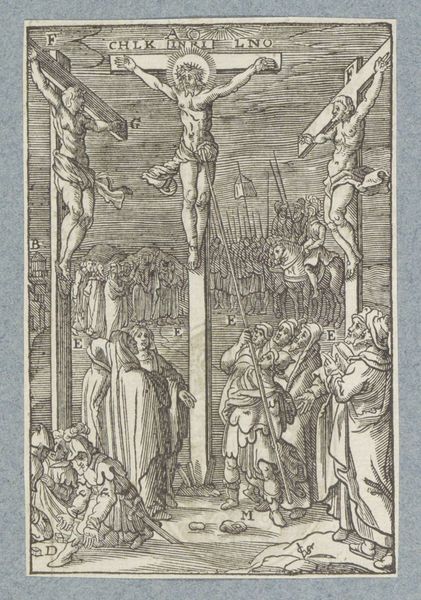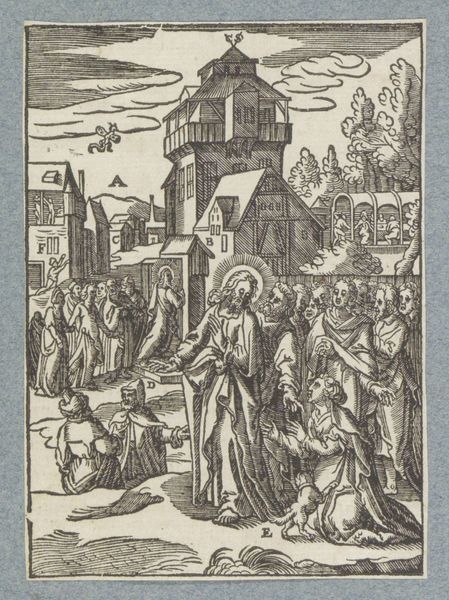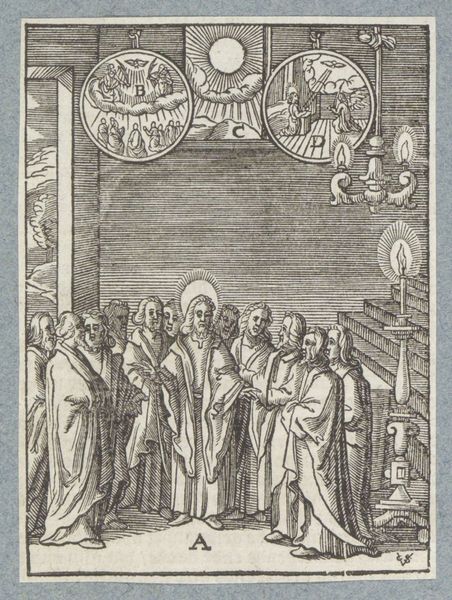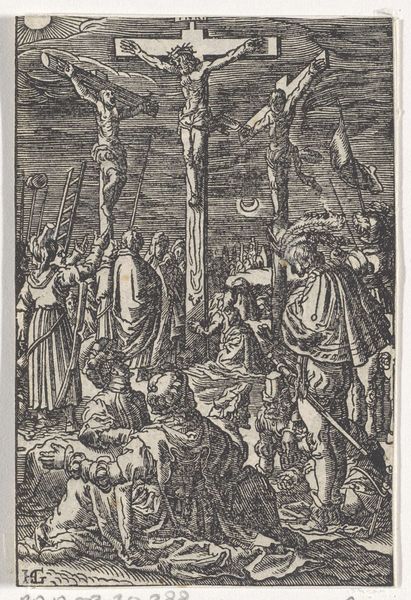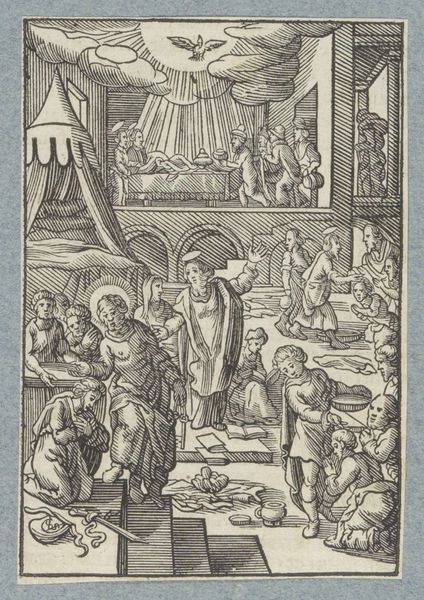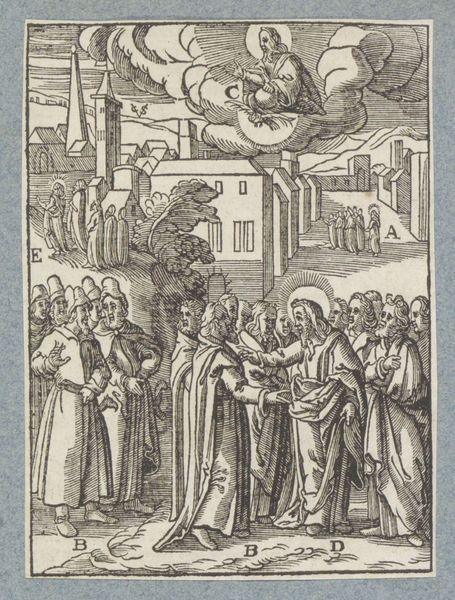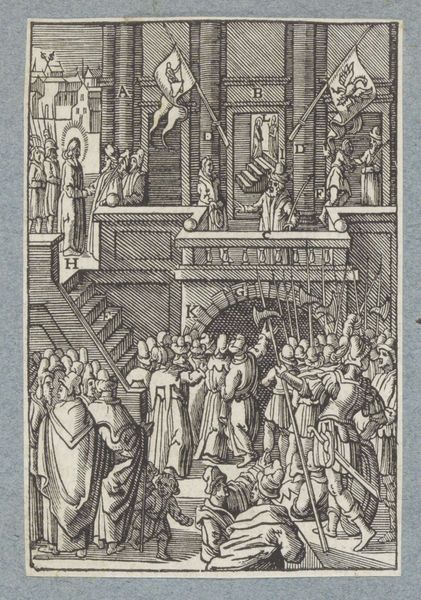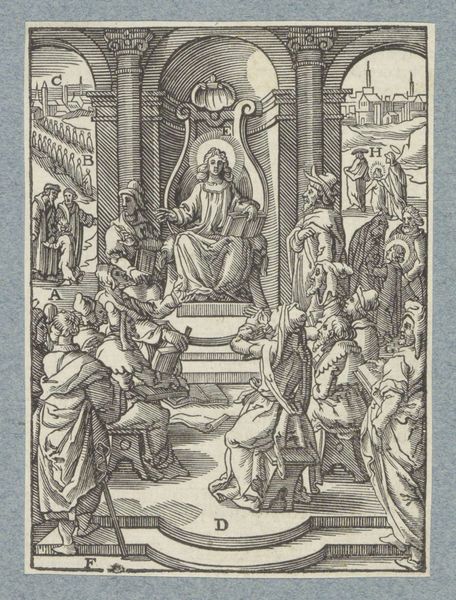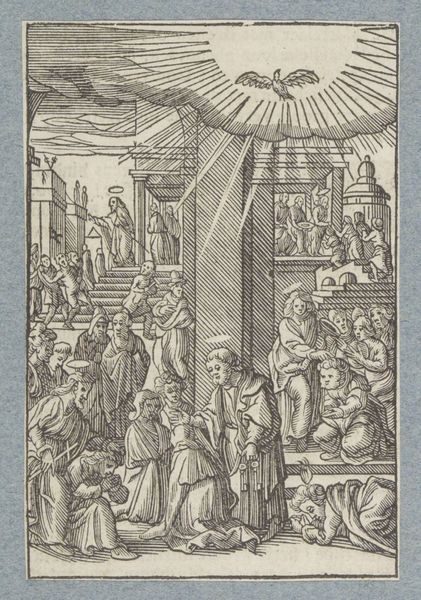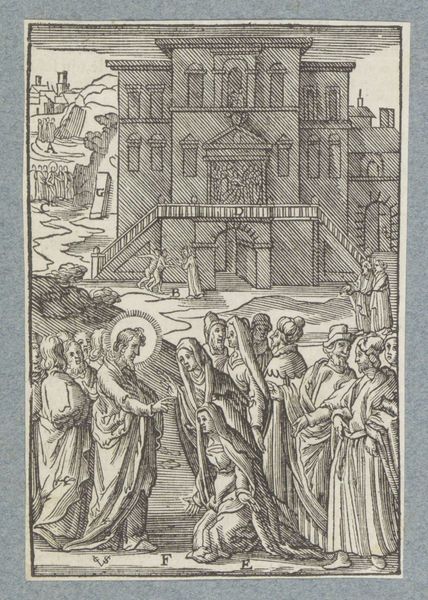
#
comic strip sketch
#
sketch book
#
personal sketchbook
#
sketchwork
#
thumbnail sketching
#
pen-ink sketch
#
pen work
#
sketchbook drawing
#
storyboard and sketchbook work
#
sketchbook art
Dimensions: height 111 mm, width 73 mm
Copyright: Rijks Museum: Open Domain
Editor: Here we have Christoffel van Sichem II's "The Bearing of the Cross and Pilate Washing his Hands in Innocence," from 1629. It's an engraving. It almost feels like a storyboard for a film! What can you tell me about it? Curator: Consider the production: woodcut prints like this democratized images, moving them beyond the elite. Think of the labour involved, the carving of the woodblock itself, multiplied for each impression. How does this mass production affect its meaning? Editor: I guess it means more people had access to religious imagery... making it less precious perhaps? Curator: Precisely. And that accessibility links directly to shifts in social and religious power. What about the material itself? Why wood, and how does that medium shape our understanding of the image? Editor: Wood is... rougher? The lines are less refined than, say, an etching on metal. So it gives it a raw, almost urgent feel. Curator: Exactly. That "raw" quality isn't accidental. The choice of material connects to the social and cultural conditions. Woodcuts are cheaper to produce, making religious narratives available to a wider audience during a period of intense religious reform. Look at the active marketplace of imagery… how is this object functioning within that system of consumption and belief? Editor: It makes me wonder who the target audience would have been. Curator: Ask yourself, who could afford this? Who was consuming religious imagery in this way? Think about how they used and perceived such works, how these scenes were consumed as images and what effect it had on people, then and now. Editor: That gives me a whole new way to appreciate the image, thinking about its impact on its original viewers, and us today. Thanks! Curator: Indeed. By focusing on the material conditions of its production and circulation, we begin to grasp the true cultural power of this small, yet incredibly significant, print.
Comments
No comments
Be the first to comment and join the conversation on the ultimate creative platform.
